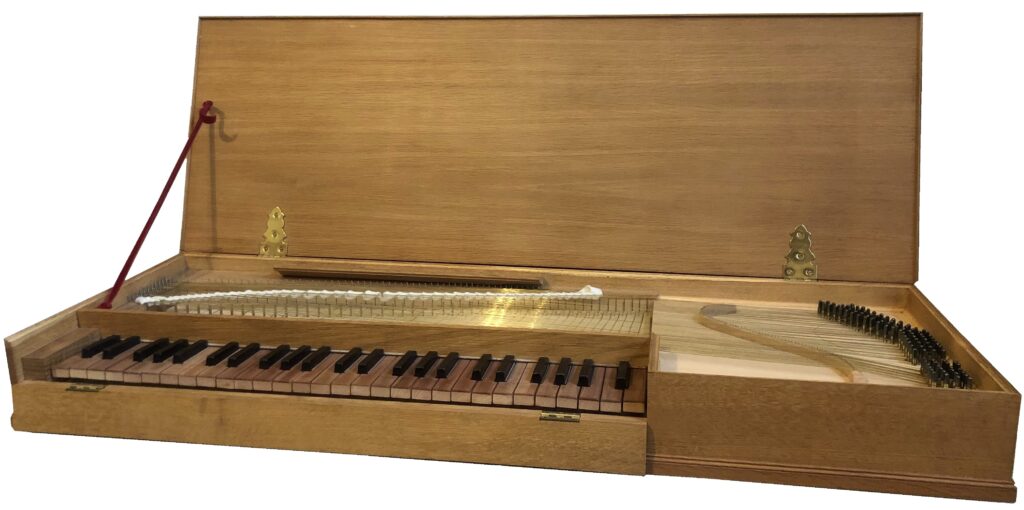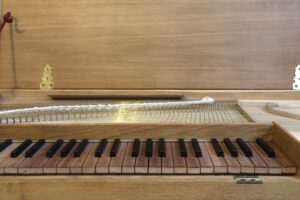Heugel 2013
Description

| Date: | 2013 |
| Origin: | Recklinghausen, Germany |
| Serialnumber: | --- |
The emergence of the clavichord is closely linked to the development of music and craftsmanship and emerged from the mechanization of the psaltery and monochord. The origins of this instrument can be traced back to the 14th century. During the 15th century the instrument underwent progressive changes. The introduction of multiple strings and the refinement of the action resulted in an expanded tonal range and allowed the musician to produce more dynamic nuances. This development contributed to the ability to play chords and complex harmonies.
The heyday of the clavichord took place in the 17th and 18th centuries, particularly in Central Europe. The German and Scandinavian regions became important centres for the production of this instrument type. Instrument makers, including well-known personalities such as Gottfried Silbermann (1683 – 1753), Johann Adolph Hass (1713 – 1779) and Christian Gottlob Hubert (1714 – 1793), contributed to perfecting the clavichord by introducing innovative mechanisms and construction techniques.
The clavichord continued to develop into an instrument of great versatility. Musicians such as Carl Philipp Emanuel Bach (1714 – 1788) and Wolfgang Amadeus Mozart (1756 – 1791) appreciated the expressive nature of the clavichord, which made it possible to convey subtle emotional nuances in music.

Clavichord Heugel, 2013 – Eric Feller Collection (keyboard & action)
This small portable clavichord was made in 2013 from a kit produced by Heugel. It is based on original instruments from the 17th century. The case is made of oak and the instrument has no legs. These small instruments are simply placed on a table and played there. The light weight of only 14 kg makes it an ideal travel instrument. The keyboard is made of pear and ebony. The compass is 4 octaves plus 2 tones (C – d3), double strung. As further characteristic, this clavichord is unfretted, which means that there are two strings for each key. As the only mechanical keyboard instrument, the clavichord thus has the possibility of influencing the sound even after the tangent has been hitting the string by changing the pressure on the key periodically. This creates the typical vibrato effect that only clavichords can produce. The tangents are made of brass and the soundboard is made of spruce.
This instrument has a lovely singing, delicate and lyrical sound.

Clavichord Heugel, 2013 – Eric Feller Collection (case)
| Length: | 109 cm |
| Width: | 38 cm |
| Height: | 12 cm |
| Circumference: | 4 octaves plus 2 notes (C – d3) |
| Mechanics: | unfretted |
| Pedals: | --- |
| Signature: | --- |

